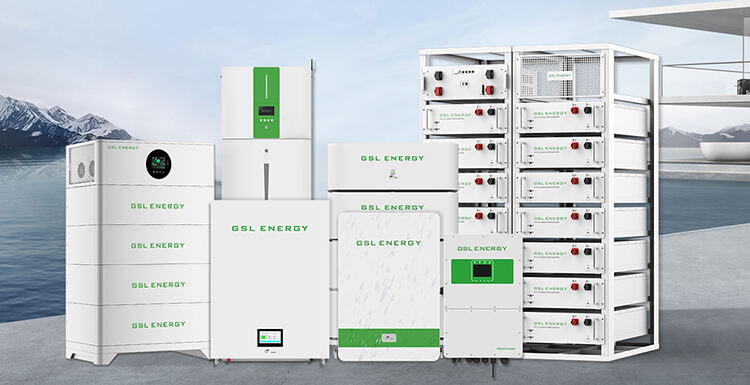The Future of Energy Storage: How to Maintain Stability in the Renewable Energy Era
As the global demand for renewable energy continues to grow, clean energy sources such as solar power and wind energy are gradually replacing traditional fossil fuels as the main source of energy production. However, with the rapid development of these clean energy technologies, the challenge of energy storage and grid management is becoming more urgent. Energy storage technology, especially lithium battery storage systems, has become an indispensable part of modern energy architecture. So, what does the future of energy storage look like in the context of the growing renewable energy industry?
1. The Instability and Challenges of Renewable Energy
Solar energy and wind power, the two main forms of renewable energy, have significant advantages: they are clean, sustainable, and relatively low-cost. However, these energy sources have a major drawback — instability. Solar power depends on sunlight intensity, while wind energy relies on wind speed. These natural factors are unpredictable and uncontrollable, leading to inconsistent energy supply. This creates the need for effective energy storage technologies to balance supply and demand.
Traditional grid systems are not well equipped to handle these fluctuations, making energy storage systems vital for managing and stabilizing the supply of renewable energy.
2. Innovation and Development of Energy Storage Technologies
With advancements in energy storage technology, especially breakthroughs in lithium-ion batteries, an increasing number of renewable energy systems are now able to smooth out supply fluctuations through energy storage solutions. Lithium batteries, with their high energy density, long cycle life, and high efficiency, have become one of the most ideal solutions for energy storage. Different types of lithium batteries, such as LiFePO4 (Lithium Iron Phosphate) batteries, have been widely applied in home energy storage systems and commercial energy storage solutions.
For example, GSL Energy offers products such as the GSL Powerwall series and high voltage energy storage systems (ESS), providing flexible and reliable energy storage solutions for both residential and commercial clients. With these systems, users can store excess solar energy or low-cost electricity generated during the day and use it during the night or high electricity price periods, reducing their reliance on the traditional grid.

3. The Diversity of Energy Storage Solutions
Energy storage technologies are not one-size-fits-all solutions; a variety of energy storage systems have emerged on the market, including:
Home Energy Storage: An increasing number of homeowners are opting to install Powerwall-type energy storage devices to create self-sustaining power systems, reducing household energy costs and providing backup power during grid outages.
Commercial Energy Storage: For commercial and industrial users, the role of energy storage systems is particularly important, especially in scenarios requiring peak load management and emergency backup power. High voltage battery systems (HV ESS) and large-scale energy storage solutions have been deployed worldwide.
Electric Vehicle (EV) Storage: With the growing popularity of electric vehicles, vehicle-mounted energy storage systems are becoming an important market. EV batteries not only power vehicles but may also serve as "mobile energy sources" to help households and businesses achieve energy storage and management.
4. Future Trends in Energy Storage Technologies
Energy storage technologies are expected to continue evolving towards higher efficiency, intelligence, and greener solutions. Key developments include:
Higher Energy Density and Lower Costs: With ongoing technological advancements, the energy density of lithium batteries and other types of energy storage batteries will continue to increase, while production costs will decrease, making energy storage devices more affordable and accessible.
Smart Grids and Energy Management Systems (EMS): The widespread adoption of smart grid technology will make energy storage systems more intelligent. Through advanced energy management systems (EMS), energy storage devices can seamlessly integrate with grids and other energy equipment to achieve optimal energy dispatch and resource utilization.
Distributed Energy Storage: As microgrid technology matures, distributed energy storage solutions will become mainstream. These systems no longer rely on traditional centralized grids but enable energy production, storage, and distribution at local and community levels, enhancing energy independence and grid stability.
Green Energy Storage Technologies: With a growing focus on environmental protection and sustainability, future energy storage technologies will place greater emphasis on green solutions. For example, new storage technologies such as sodium-ion batteries, solid-state batteries, and flow batteries are under development and may play an important role in the future of the energy storage market.
5. Conclusion: The Perfect Synergy Between Energy Storage and Renewable Energy
As the global energy transition progresses and renewable energy is deployed on a large scale, energy storage will play an increasingly vital role in maintaining grid stability and supporting the widespread use of renewable energy sources. By leveraging innovative energy storage technologies, we can manage and utilize renewable energy more efficiently, reduce dependence on fossil fuels, lower carbon emissions, and achieve a global energy transformation toward sustainability.
For both businesses and households, investing in advanced energy storage solutions is not only a necessary means of coping with energy price fluctuations and power outages, but also a smart choice to improve energy efficiency and reduce energy costs. As technology advances and the market expands, the future of energy storage systems will be increasingly powerful, intelligent, and sustainable, ushering in a more stable and sustainable energy future.


